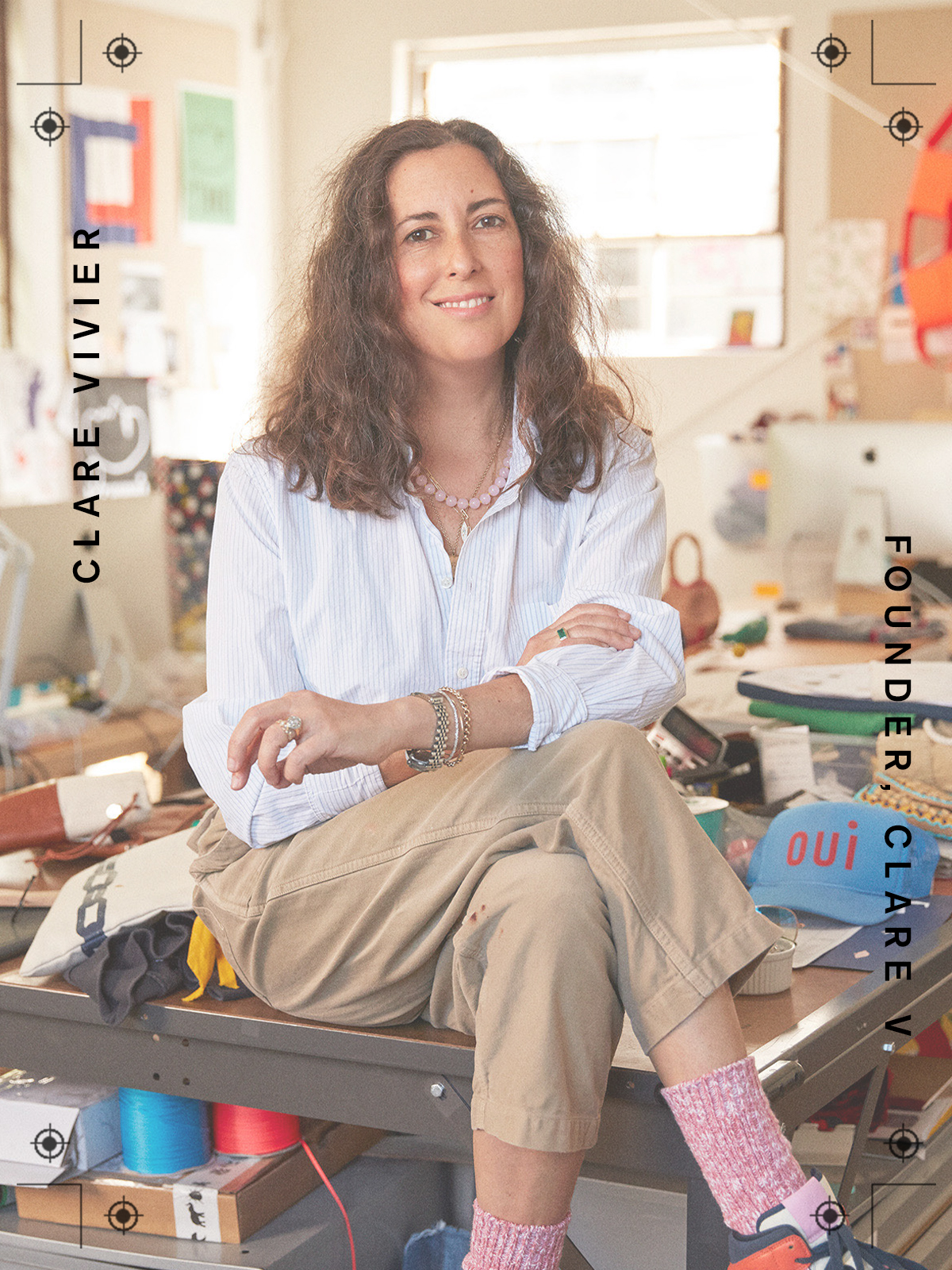
Welcome to our podcast, Who What Wear With Hillary Kerr. Think of it as your direct line to the designers, stylists, beauty experts, editors, and tastemakers who are shaping the fashion-and-beauty world. Subscribe to Who What Wear With Hillary Kerr on Apple Podcasts and Spotify.
Fashion designer Clare Vivier likes consistency. Vivier is the founder of the Los Angeles–based brand Clare V., a handbag and accessory line. While Vivier launched the brand in 2008, many of her designs have stood the test of time. “In 15 years of business, some of my best sellers I’ve had around for seven, eight years,” Vivier said. “We keep iterating on [them], and we keep renewing with different leathers and different beautiful fabrications.”
Vivier is always looking to innovate and is proving that with her latest endeavor: her very own book. Hitting shelves later this month, Vivier is celebrating 15 years of Clare V. with La Vie de Clare V.: Paris Chic/L.A. Cool, which takes readers on a journey through Vivier’s career. For the latest episode of Who What Wear With Hillary Kerr, Vivier shares how an email out of the blue led to the book deal, what elements of her business have changed over time, and more.
For excerpts from their conversation, scroll below.
You have a book coming out to celebrate the brand’s anniversary. How did you decide to publish a book as the pinnacle of this massive milestone in business?
Gisela Aguilar, who is an editor at Rizzoli contacted me out of the blue. I got an email from her, and she asked if I’d be interested in doing a book. I was like, “What? Of course.” I emailed her back immediately. That started the conversation rolling, and then we figured out that when the book would be coming out, it would be our 15th anniversary. I was like, “Well, this is a great milestone.” It turned out to be a perfect marking point of our 15 years.
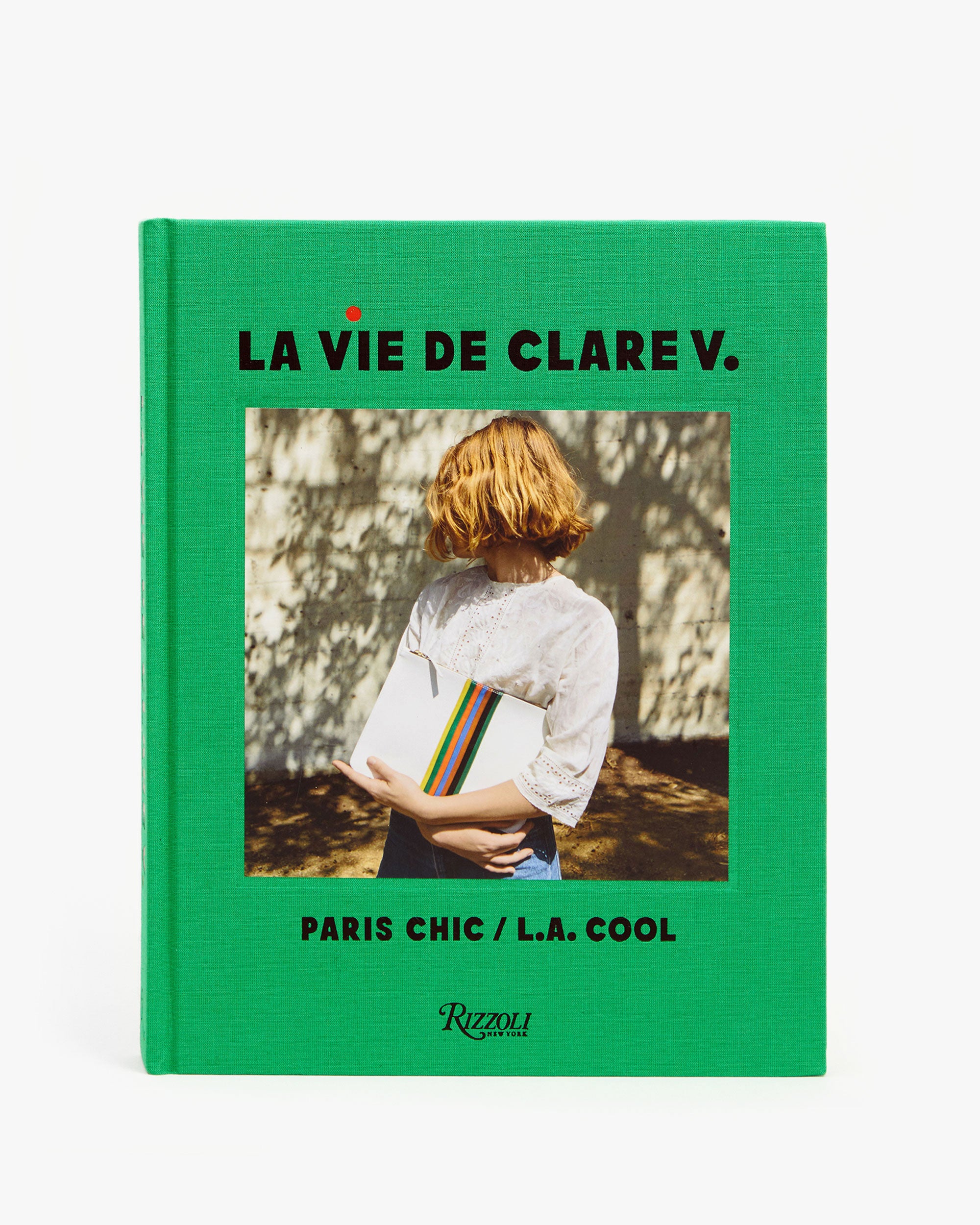
The book is phenomenal. For our audience, how would you describe it? What part are you most proud of?
The brand is very much influenced by my French-by-marriage heritage and our culture here in Los Angeles, where I formed the brand 15 years ago. I started the brand out of my house in Silverlake, and there’s a kind of grittiness to the east side of L.A. It’s beautiful and wonderful, and there’s so much gorgeous nature and sunshine, but there’s also a grittiness that I love. That’s my style. I feel like that comes across in the book insofar as this brand. As lovely and wonderful as it is and the beautiful products that we make, there’s also a perfectly imperfect aspect to it.
We have a sweatshirt in our collection that we’ve had for at least 10 years, and it says “Bourgeoisie Sauvage.” It’s been very hard to translate that phrase, but if you know what bourgeoisie means, it’s kind of like middle class, aspiring class. Sauvage means wild. Lizzie Swift [Clare V.’s art director] and I came up with this phrase because we are so infatuated with fonts and lettering and typefaces. The letters of bourgeoisie looked so beautiful together. It’s a beautiful word, but we couldn’t just use bourgeoisie because that’s snobby and weird. We needed to mess it up a little bit, knock it down. It’s a perfect mix of the high-low. I figured out in doing this book that it represents the brand. There’s this perfectly imperfect, high-low aspect to the brand that “bourgeoisie sauvage” encapsulates.
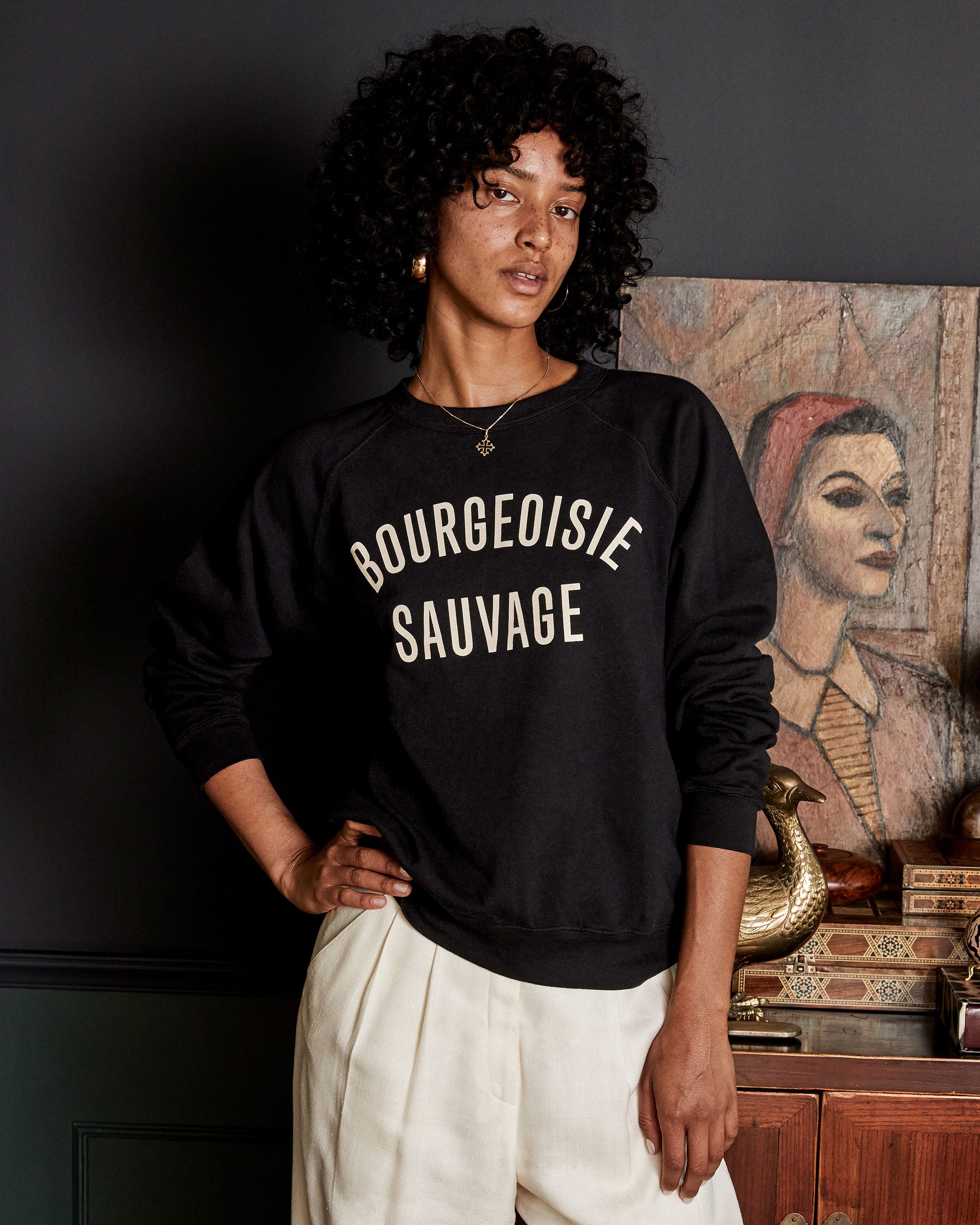
You have scaled tremendously from just you to now having 14 retail locations and wholesale partners across the globe—not to mention a thriving e-comm business. What has remained the same? Are there elements that you’re like, “Wow, that’s changed so much more than I would have thought”? Talk to me a little bit about the evolution.
It’s interesting because so many of my designs have been with me for a long time. In 15 years of business, some of my best sellers I’ve had around for seven, eight years. We keep iterating on [them], and we keep renewing with different leathers and different beautiful fabrications. … Because I’m still creative director and because I still have a vision, I’m still the same person. I still have the same taste and point of view.
The creative process and the product that we turn out still feels like us. I think it’s a combination of having a beautiful foundation of gorgeous designs that we can keep iterating on and then just having a clear vision because it’s coming from someone who loves design and loves fashion and loves wearing what we make and loves seeing my friends wear it. I want to make things that people whose style I look up to… If they carry my bags, then I think that’s it. That’s a win.
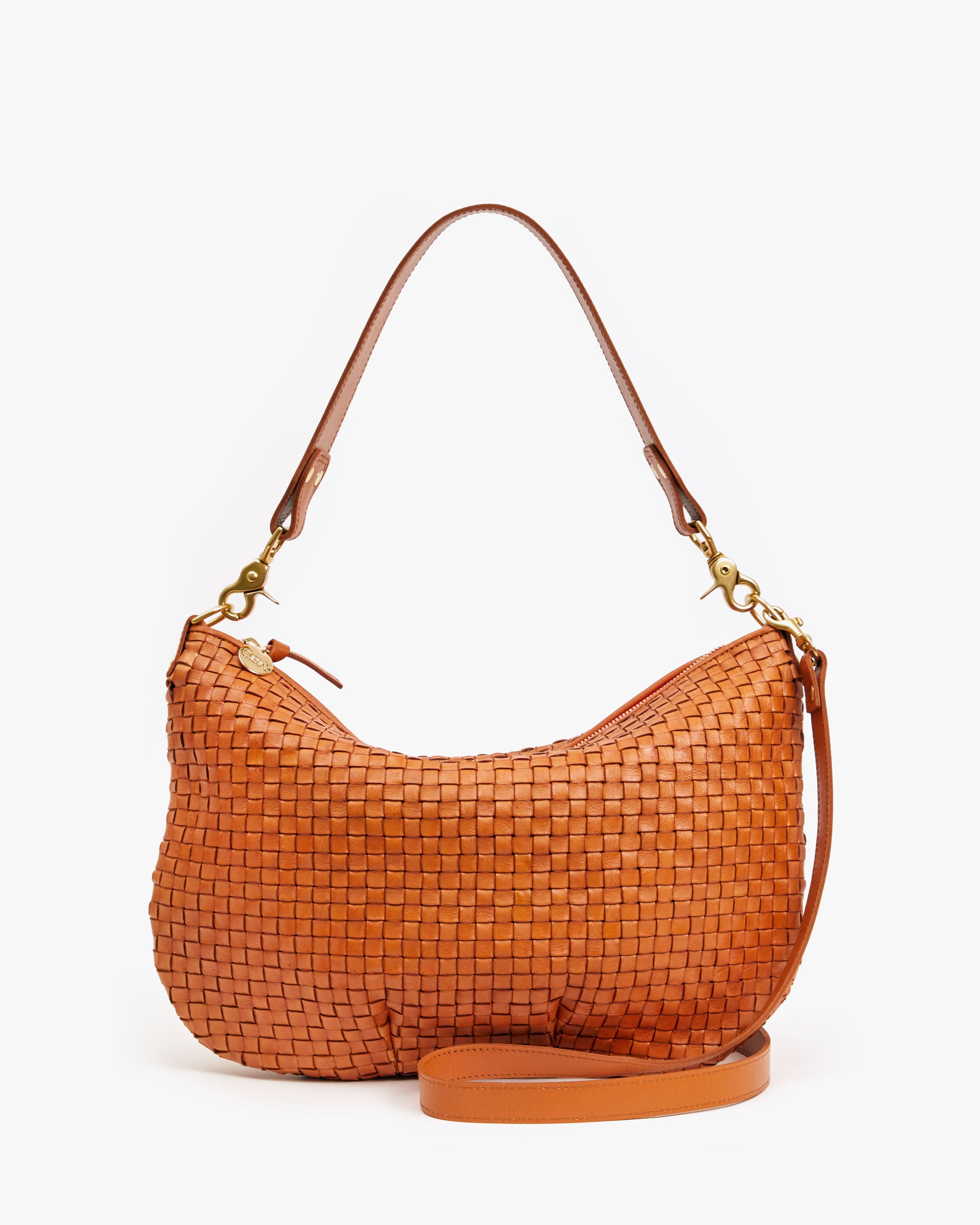
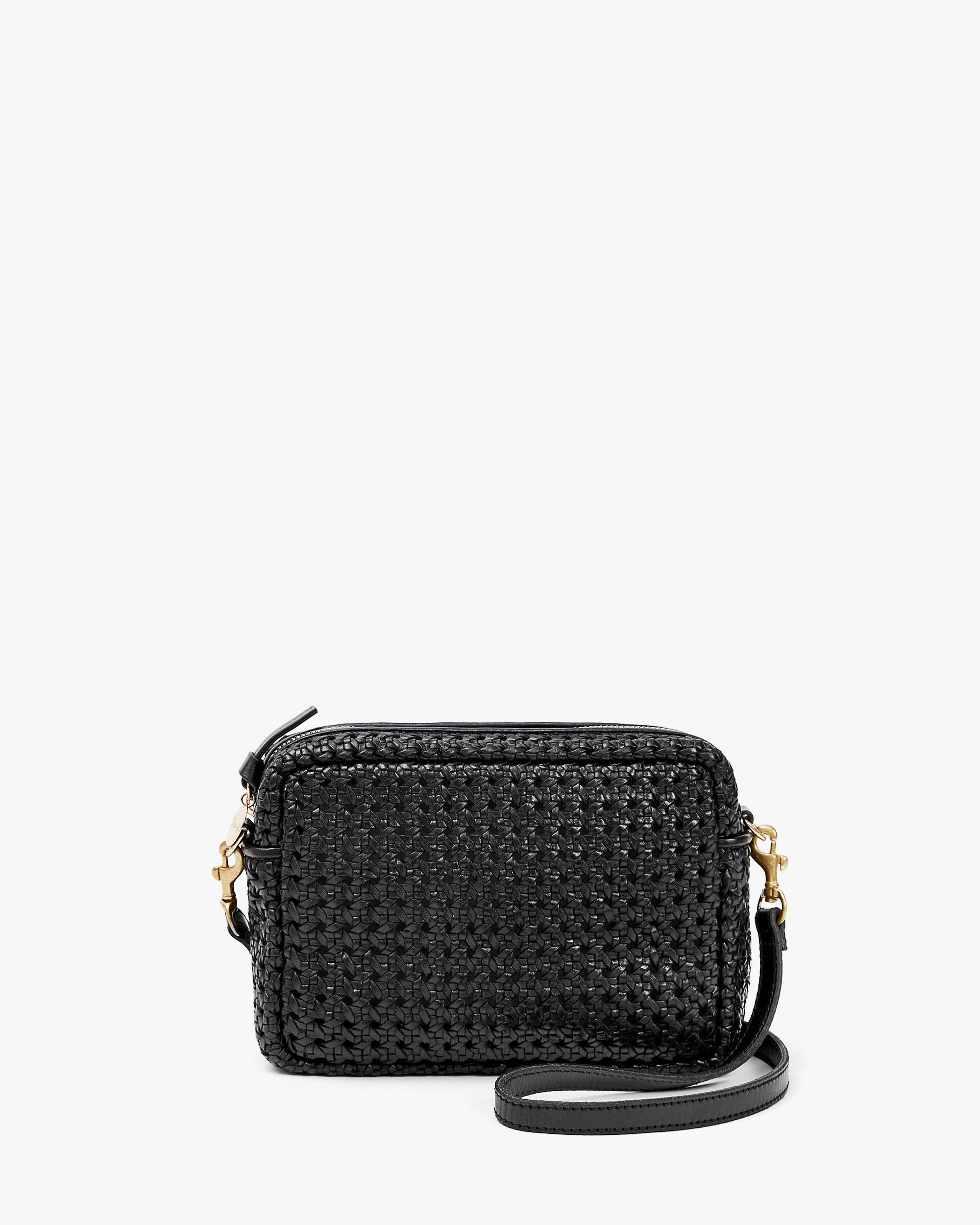
I’m wondering if you could tell me a story about a product that feels magical to you in some way, something that had a resonance that you weren’t necessarily expecting.
La Tropezienne tote, for me, still holds a very special place in my heart. It is one of my very first totes, and I made it myself when I had a blog. I was just starting to sew on leather, and I was contacted by a woman who previously had a bag line in Los Angeles. She contacted me out of the blue and said, “I’ve got some leather to sell. Would you be interested in coming to see my studio? I’ve closed up my business, and I’m selling leather.” I was like, “Sure, I’ll go to your studio.” I bought a few hides of this beautiful vegetable-tanned Italian leather. I made the first sample of the tote called La Tropezienne.
To me, it just epitomized a lovely tote from the South of France, which was why I called it La Tropezienne, and it’s just very simple. It was a little twist on the classic boat tote. I made the tote, and then I put it on my blog, and I said, “I’ve got your summer tote,” knowing that I could probably make another 10 out of the materials that I had purchased. Just based on that one photo, I sold the 10 immediately. It was the first time that I was like, “Wow, this is like internet wildfire.” I was like, “Oh my god, what am I gonna do? I’ve sold out of them.” And then I was like, “I’m gonna go back to that woman and buy the rest of it.” I bought the rest of her hides. I made—I don’t know—50 totes and sold out of them all so quickly.
It’s so funny because then I was like, “Now, I’m done with that leather. Well, that’s a bummer. Now, what do I do?” And my husband’s like, “Find that leather. What do you have to do?” I found a vendor in New York City that sold the same leather and started to make La Tropezienne.
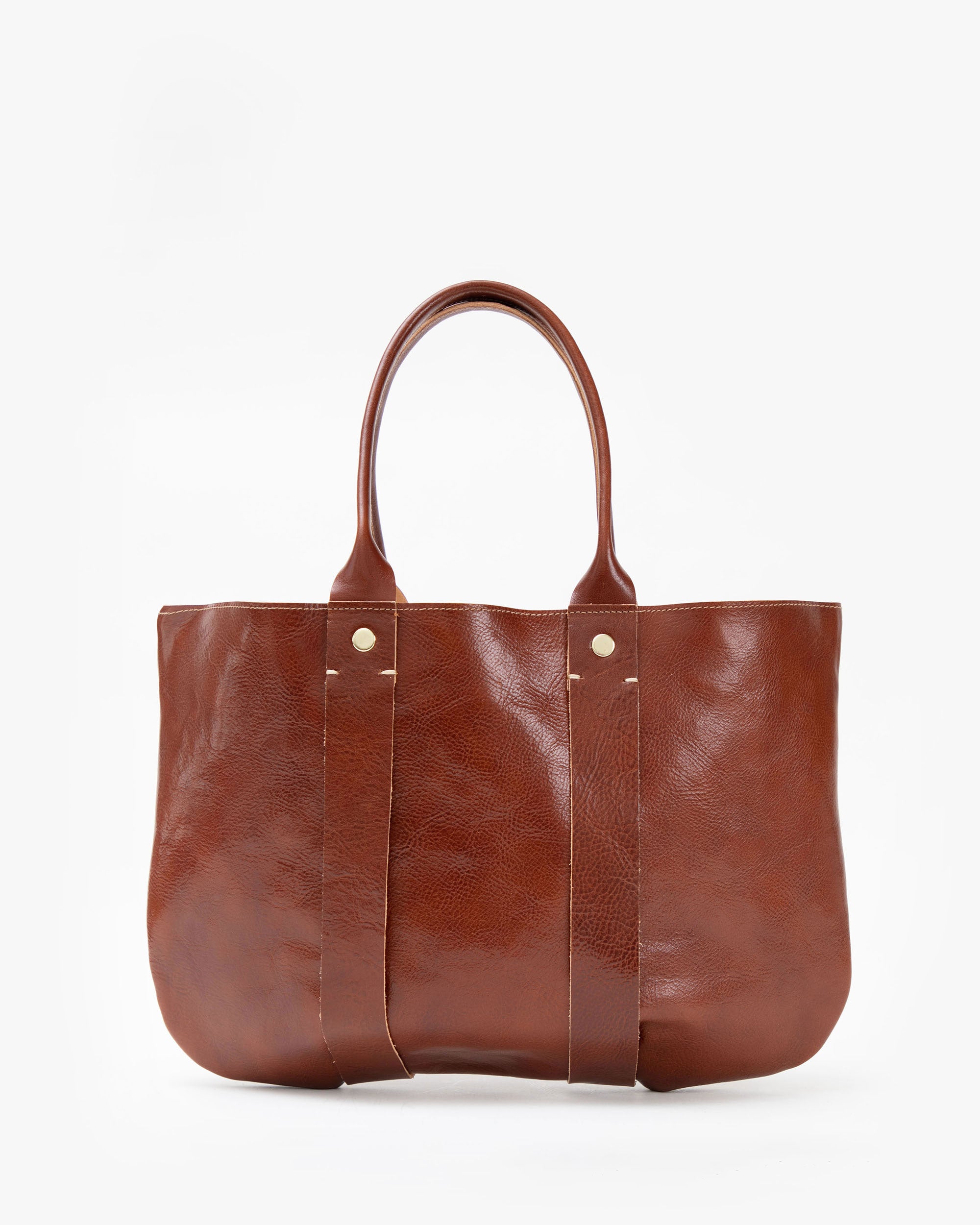
This interview has been edited and condensed for clarity. Next, check out our interview with stylist and wardrobe consultant, Allison Bornstein.
